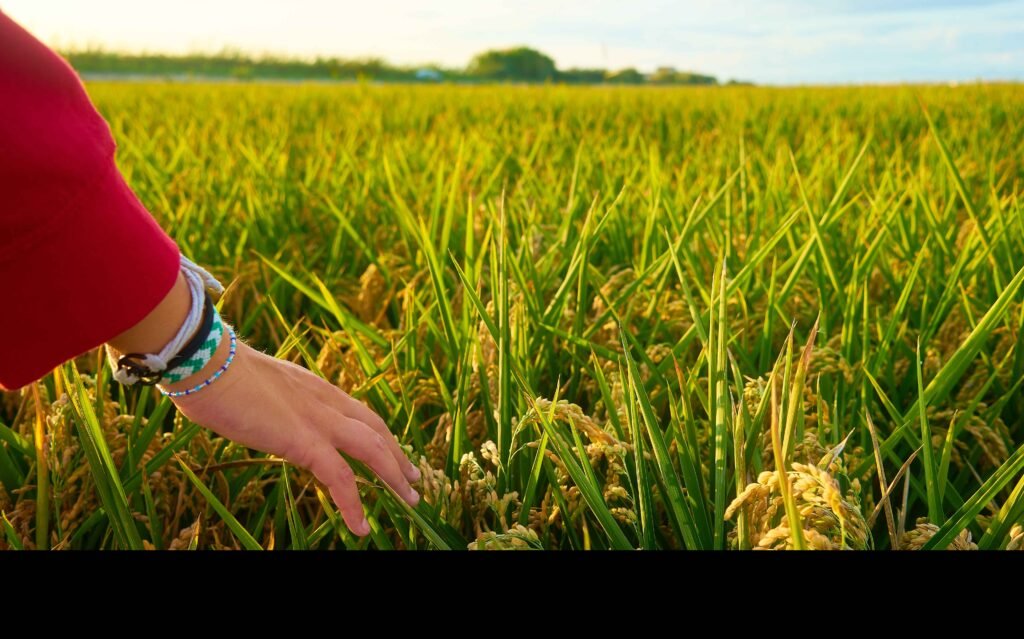
Overview
Pakistani rice is well-known all over the world due to its fragrance, fluffy taste, and distinctive aroma. In this post, we’ll discuss rice cultivation activity which is a major agricultural activity, especially in Sindh and Punjab- different varieties are grown for both local and international use. The cultivation process is based on some farming practices and water resources. With strategic investments and the right reforms, Pakistan can truly grow in the agriculture sector. Let’s begin with us.
Importance of the rice industry for Pakistan
We can’t deny the importance of the rice industry for Pakistan. The agriculture sector is the backbone of the economy of Pakistan. Rice is the 4th largest exporter and the 10th largest rice producer. Pakistan has a manpower of farmers and labourers, also a fertile land-perfect for the cultivation of rice. Rice needs water, and our country has enough water resources.
As per history, rice has become an important part of the Indus Valley civilization. With time, it has become an important component of food culture and is served with different lentils, curries, and vegetables. Pakistan is world’ leader and is facing some challenges like sable market price, and a better water management system.
Key Points of Rice Cultivation
Major Varieties:
Key Rice Varieties from Pakistan. Pakistan provides many varieties that we have discussed in our post. Here’s a short list:
- Basmati Rice: Fragrant and premium, perfect for biryani.
- IRRI-6: A long-grain variety, great for everyday meals.
- Brown Rice: Nutritious and growing in demand.
Geographic Focus:
The basic regions for rice cultivation are the fertile lands of Sindh and Punjab.
Economic Significance:
Rice is prepared for billions of consumers in the world; it contributes to national economy as a major cash crop. It also creates millions of jobs for local people and runs their homes.
Irrigation and Water Management:
It consists of some quick methods like cultivation on beds and furrows without compromising yield.
Fertilizer Application:
Here, farmers need to apply an equal portion of phosphate and potassium. Nitrogen is added to maximize intake and reduce wastes.
Challenges and Opportunities
- Water Scarcity:
- Market Volatility:
- Farmer Awareness:
- Global Demand
Traditional vs. Modern Practices
In the past, Pakistan relied on traditional methods. Farmers work manually, like spreading seed with simple tools, and depend on floor irrigation. Over last few years, large-scale farmers or small-scale farmers have adopted mechanized transplanters, laser land levellers, and combine harvesters that help them and save costs.
Challenges in Rice Cultivation
Challenges in rice cultivation are climate change, leading to extreme weather like droughts, floods and water scarcity due to rice’s high-water requirement and decreasing groundwater levels. Pressure of pests and diseases like soil degradation, increase in competition in the market, lower harvest volume, nutrient deficiencies, and poor germination are the main problems. Also, rice straw is used as animal feed, which is not only a feed but also a healthy a feed item.
Here is a list of some challenges that are faced by farmers:
- Water Shortages
- Climate Change
- Rising Input Costs for fertilizers, labour
- Post-Harvest Losses
- Global Competition.
Environmental Challenges
- Climate Change
- Water Scarcity
- Rising Sea Levels
Pests and Diseases
- Invasive Species
- Plant Health
Agronomic and Soil Challenges
- Soil Degradation
- Weed Pressure
- Nutrient Deficiencies
Socio-Economic Challenges
- Market Competition
- Lower Harvests
- Farm Waste Management
Solutions and Opportunities
- Water-Saving Techniques
- Climate-Smart Varieties
- Converting rice straw into biochar
- Using supplements
- Sustainable Practices
Government and Private Sector Initiatives
Recently, the government of Pakistan has taken the best initiatives in the agriculture sector. In Pakistan, many institutes are established for working on quality of seed that has pest resistant. Different training programs and subsidies are introduced on the irrigation system; fertilizers are also introduced on fertilizers for improving productivity.
Export Significance
Each year, Pakistan exports millions of tons of rice to Europe, North America, the Middle East, and other sectors- they enjoy Pakistani rice varieties.
A Sustainable Path Forward
While rice cultivation has a bright future and good output. Encouraging young farmers to use technology and providing them with access to training to learn how to handle international clients.
This path is based on exploring the latest technology use in the rice sector (non-traditional markets such as the Far East, South America, and Africa).

Muhammad Arif CEO, MBA in Finance and Marketing from South Korea University. Result-driven Chief Executive Officer with over 15 years experience leading and increasing growth in businesses. Starting from the scratch, launching and leading increasing in revenue in the three businesses in animal feed and food exports, and renewable energy in Pakistan. Particularly, having plentiful experience on East Asia and Middle East markets, and working with multinational organizations including the UN.


